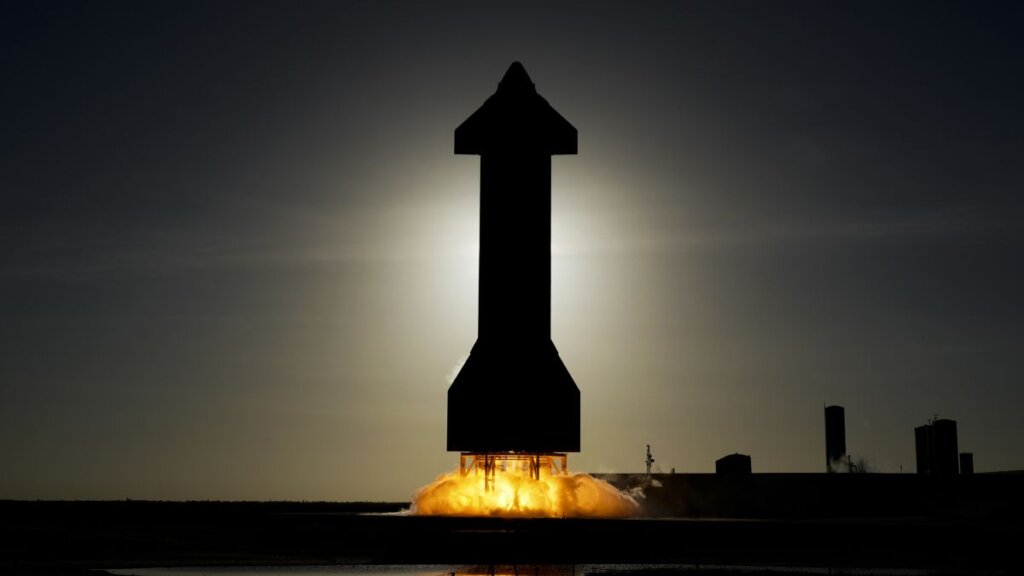SpaceX recently completed a static fire test of its next Starship prototype, the upper-stage component of the company’s giant new deep-space transportation system.
All six Raptor engines at the base of the Starship test vehicle, known as Ship 25, were ignited for about five seconds on Monday evening (June 26).
Ship 25 is being prepped for the second test flight of a fully stacked Starship vehicle. During the first flight, which occurred on April 20, Starship flew nearly 25 miles (40 kilometers) high from SpaceX’s Starbase site in South Texas, but its two stages failed to separate as planned. SpaceX sent a self-destruct command to the vehicle, which took effect about four minutes into flight.
Monday’s test firing of Ship 25 seems to have gone resoundingly well. On Tuesday afternoon (June 27), SpaceX tweeted images from the previous day’s proceedings, and they highlight the sheer power generated by Starship’s engines. The smoke and dust from ignition managed to stay low enough to the ground, and diffuse enough, for Starship to remain perfectly in frame, engine fire imparting an orange glow to the black tiles of the vehicle’s heat shield.
Related: SpaceX fires up Starship spacecraft ahead of 2nd test flight (video)
SpaceX founder and CEO Elon Musk also tweeted an image from the static-fire test early on Tuesday morning. This one, from an upward perspective, shows the extreme bright light emanating from the flames, with Starship centered in the shine.
A successful engine test is a promising sign for SpaceX, as the company has implemented “well over 1,000” changes to the rocket since the April 20 attempt. Musk recently estimated that Ship 25 might be ready to fly as soon as six weeks from now.
The static fire was also good news for NASA. The space agency’s Artemis program is relying on Starship to be ready to fly astronauts to the surface of the moon in just a few years.
Starship will fly on Artemis 3, a crewed flight to the lunar south polar region that’s currently scheduled for late 2025. That mission will see four astronauts launch aboard an Orion spacecraft atop NASA’s Space Launch System rocket. Orion will rendezvous with Starship in orbit around the moon; the SpaceX vehicle will then ferry astronauts down to the lunar surface. So, no lunar landing for NASA until Starship is ready.
A recent assessment of Starship’s progress has caused NASA officials to speculate that Artemis 3 might be pushed to 2026, though a number of other factors were already contributing to the mission’s likely delay.

